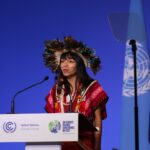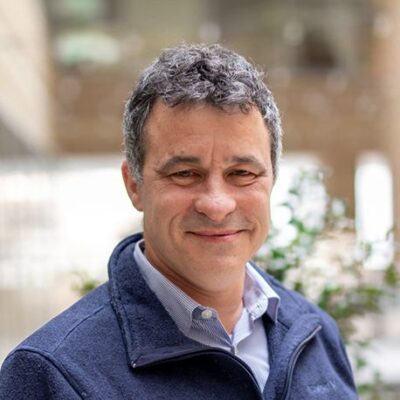Listeners:
Top listeners:
-
 play_arrow
play_arrow
118 | Kenyan Herders Say Judgement Against Them Based on Forged Signatures / Continuation of Episode 117
-
 play_arrow
play_arrow
117 | Surviving Survival Internatinal, Part 1: Kenyan Elders Call Foul on International Media, NGOs
-
 play_arrow
play_arrow
116 | From Ticking Time Bomb to Demographic Dividend: James Mwangi and Kenya's Great Carbon Valley
-
 play_arrow
play_arrow
115 | Unpacking Donald Trump's Very Weird Environmental Orders
-
 play_arrow
play_arrow
114 | Michael Greene: Carbon Cowboy or Lone Ranger? Part 1
-
 play_arrow
play_arrow
113 | The Future of Environmental Finance: Strategies for Biodiversity and Climate Solutions, with David Hill and George Kelly
-
 play_arrow
play_arrow
112 | Fantasy Football and Dynamic Baselines: New Tools for Impact Assessment
-
 play_arrow
play_arrow
111 | The False Dichotomy Between Reductions and Removals (Rerun)
-
 play_arrow
play_arrow
110| Ecological Economics, Systems Thinking, and the Limits to Growth
-
 play_arrow
play_arrow
109 | How Brazil's Quilombola Communities are Planting the Seeds of Sustainability for Small Farms Around the World, with Vasco van Roosmalen of ReSeed

- arrow_back Home
- keyboard_arrow_right Podcast
- keyboard_arrow_right The Tribes of the Climate Realm
97 | The Mosaic, the Minefield, and a Manifesto
Carbon MethodologiesIndigenous People Episode April 8, 2024
-
 play_arrow
play_arrow
PLAY EPISODE
Transcript
Photo courtesey of HH58 – Own work, CC BY-SA 4.0, https://commons.wikimedia.org/w/index.php?curid=70303656
This episode of Bionic Planet is entitled “The Mosaic, the Minefield, and a Manifesto.”
The “Mosaic” reminds us that there is no single solution to the climate challenge. Instead, we have a mosaic of interlocking solutions that fit together like a clock. Carbon finance is just one part of it, and it’s one of the few parts that have worked well, albeit imperfectly.
The “Minefield” reminds us that the mosaic of solutions sits in an ideological minefield, and you never know if you’re going to trigger an explosion.
The “Manifesto” is my promise to leverage my 20 years of experience in environmental finance to give you a truer, more nuanced, and complete understanding of the climate and biodiversity landscapes than you’ll get anyplace else.
The New Vertical
This episode is part of a new vertical called “the Tribes of the Climate Realm” to reflect the fact that the climate community is a disunited hodgepodge of tribes who occasionally unite against a common enemy, but who are divided by ideological and sectarian differences that sometimes erupt into something akin to civil war. Tragically, as often happens in these situations, the most combative, belligerent, and least civilized tribes are usually the most colorful, despite having the least to offer. That’s led to a dangerous disconnect between the real debates taking place inside the climate realm and the public discourse unfolding outside of it.
I initially started to call this vertical “Unmasking the Anti-REDD Crusade,” because there is a very high-profile anti-REDD crusade, but I felt that frame was too narrow and dismissive of legitimate challenges, philosophical disputes, and areas where reasonable people can disagree.
It’s part of a new vertical that I’m calling “The Tribes of the Climate Realm” to reflect the fact that the climate community is not a monolithic entity but is, instead, something like a disunified realm spread across thousands of contested miles of mountains, plains, and forests, with competing tribes and factions and all the different perspectives, agendas, and intrigue that come with it.
The Tribes of the Climate Realm may occasionally unite against a common enemy –- climate change –- but they’re divided by ideological and sectarian differences that sometimes erupt into something akin to civil war.
Tragically, as often happens in these situations, the most combative, belligerent, and least civilized tribes usually have the least to offer but are also the most colorful, so they win the hearts and minds of outsiders drawn to bright, shiny objects –- which is to say, most of us who’ve ignored the Climate Realm and its internecine battles until recently — despite the fact that the realm and its battles have been very public since the United Nations’ First World Climate Conference in 1979.
Related Links
Will Coverage of Climate Solutions Suffer the Same Fate as Coverage of Climate Science
Six Lessons from the History of Natural Climate Solutions
Where Does Healthy Critique End and Cynical Denial Begin?
Timestamps
00:00:00 – Introduction to the Tribes of the Climate Realm
00:04:10 – Introduction to Enhanced Weathering as a Solution
00:05:03 – Historical Background of Enhanced Weathering
00:06:29 – Debate Over Enhanced Weathering Methodologies
00:07:10 – Purpose of the Voluntary Carbon Market
00:08:03 – Mark Kenber’s Perspective on Climate Efforts
00:09:21 – Marc Stewart’s Contribution to Forest Carbon Protocol
00:09:55 – Media Misrepresentation of Carbon Markets
00:10:39 – Challenges Faced by the Verified Carbon Standard
00:12:14 – Importance of Accurate Storytelling in Climate Discourse
00:13:09 – Call for Sponsorship and Support for Bionic Planet
00:14:23 – Emphasizing the Complexity of Climate Solutions
00:16:30 – Contrasting Narratives in the Climate Realm
00:17:44 – Manifesto for Honest and Nuanced Climate Reporting
00:19:08 – Exploration of VCS Genesis and Carbon Projects
00:20:01 – Conclusion and Call to Action
Quotes
• 00:00:31-00:00:42 “Tragically, as often happens in these situations, the most combative, belligerent, and least civilized tribes are usually the most colorful, despite having the least to offer.”
• 00:01:18-00:01:29 “We need to elevate the public discourse. But that doesn’t mean replacing anti-market propaganda with pro-market propaganda, although it does mean purging the bunk that’s out there already.”
• 00:04:10-00:04:20 “I smelled more than money in his mail. I smelled a rat.”
• 00:05:03-00:05:14 “In rocks, it happens over millions of years, while in trees, it happens over decades.”
• 00:07:42-00:07:53 “Let’s not forget that we’re here because we failed.”
• 00:16:30-00:16:40 “The first native has an easier story to tell, but the second one has a truer story to tell.”
Episodes
098 | The Case of the Tangled Titles: Unraveling the Legal Complexities of Land Ownership in the Amazon
Forest Carbon April 16, 2024



